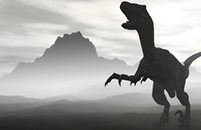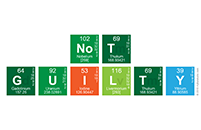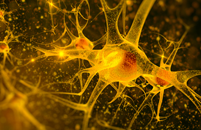Articles by Category
Articles by Issue
Recent Comments
- Stephen Brodsky on Harming Children: Uncovering and Overcoming Bias When Defending Sex Crimes Against Children
- Laura on Courtroom Attire: Ensuring Witness Attire Makes the Right Statement
- Members selection — Court-Martial Trial Practice Blog — February 22, 2014 on Why Do We Ask Jurors To Promise That They Will Do the Impossible?
- Video: Pryor Greed and Lawyers | Parents Rights Blog on Ethical Issues in Racial Profiling
- On the relationship between ideological and demographic diversity on Inaccuracy in Political Self-Perception: Young Adults Are Not as Conservative as They Believe
- Taylor Bishop on Tips for Preparing the Expert Witness
- Thanks for stopping by…. « The Jury Room on Book Review- Social Media as Evidence: Cases, Practice Pointers, and Techniques
- Thanks for stopping by…. « The Jury Room on Book Review: The Juror Factor: Race and Gender in America’s Civil Courts
Visual evidence Archive
-
The Best Structure for Creating Trial Graphics
by Brian Patterson and Jason BarnesPosted on May 31, 2018 | 2 CommentsCreating a trial presentation is a balancing act. We must balance advocacy with ethics, aesthetics with function, narrative with evidence. We are told that the most effective presentations show instead of tell, but in reality, the showing and the telling are also aspects of the presentation which must be balanced—the […] -
What Television Can Teach Us about Trial Narrative
by Richard GabrielPosted on December 16, 2016 | 4 CommentsRichard Gabriel continues with ways TV shows can help make us better courtroom communicators. -
Graphics Double Comprehension
by Jason BarnesPosted on December 16, 2016 | 9 CommentsJason Barnes tells us why a picture paints more memorable words. -
Uncommon Wisdom from Everyday People: 13 Lessons from Patent and IP Mock Jurors
by Douglas L. Keene, Ph.D. and Rita R. Handrich, Ph.D.Posted on December 1, 2015 | 6 Comments13 lessons gleaned from mock jurors over more than 15 years of patent and intellectual property work. In cases involving computer hardware and software, industrial processes, mechanical devices, logos and color schemes, tag lines and slogans—jurors have told us what is important to them about disputes involving patents, copyrights, trademarks, and creativity. -
Hunting Dinosaurs? A Conversation with Steve Susman and Tara Trask on the Vanishing Jury Trial
by L. Hailey Drescher, M.A.Posted on August 28, 2015 | 1 CommentAn exciting new project at NYU: The Civil Jury Project. Here's a conversation between Steve Susman and Tara Trask about the project. -
Looks Like Science, Must be True! Graphs and the Halo of Scientific Truth
by Aner Tal, Ph.DPosted on May 31, 2015 | 6 CommentsHow complex do your graphs and charts need to be to persuade? As it happens, not very complex. -
Does Video Image Size Affect Jurors’ Decisions? A Look at How Image Size Interacts with Evidence Strength, Defendant Emotion and the Defendant/Victim Relationship
by Wendy P. Heath, Ph.D. and Bruce D. Grannemann, M.A.Posted on November 26, 2014 | 9 CommentsWendy Heath and Bruce Grannemann ponder how video image size in the courtroom is related to juror decision-making about your case. They discuss how image size interacts with image strength, defendant emotions, and the defendant/victim relationship. -
The Selective Allure of Neuroscience and Its Implications for The Courtroom
by Adam B. Shniderman, Ph.D.Posted on November 26, 2014 | 2 CommentsNeuroscience evidence is not alluring to everyone. Just to some. Thorough voir dire becomes critically important to the attorney who wants to understand those composing a jury. -
Neuroimagery and the Jury
by Jillian M. Ware and Jessica L. Jones and N.J. Schweitzer, Ph.D.Posted on August 20, 2014 | 2 CommentsAuthored by Jillian M. Ware, Jessica L. Jones, and Nick Schweitzer with responses from Ekaterina Pivovarova and Stanley L. Brodsky, Adam Shniderman, and Ron Bullis. Remember how fearful everyone was about the CSI Effect when the research on the ‘pretty pictures’ of neuroimagery came out? In the past few years, several pieces of research have sought to replicate and extend the early findings. These studies, however, failed to find support for the idea that neuroimages unduly influence jurors. This overview catches us up on the literature with provocative ideas as to where neurolaw is now.
![The Best Structure for Creating Trial Graphics Creating a trial presentation is a balancing act. We must balance advocacy with ethics, aesthetics with function, narrative with evidence. We are told that the most effective presentations show instead of tell, but in reality, the showing and the telling are also aspects of the presentation which must be balanced—the […]](https://thejuryexpert.com/wp-content/uploads/AssertionEvidenceGraphic-201x130.png)


![Top 10 Most Accessed Articles of 2015 Every year we identify the top 10 articles chosen by our readers as most interesting in the calendar year. This year these articles are our top ten. Have you missed any of them? This is your chance to catch up! Does Deposition Video Camera Angle Affect Witness Credibility? By Chris […]](https://thejuryexpert.com/wp-content/uploads/TopTen2015_thumb.png)





